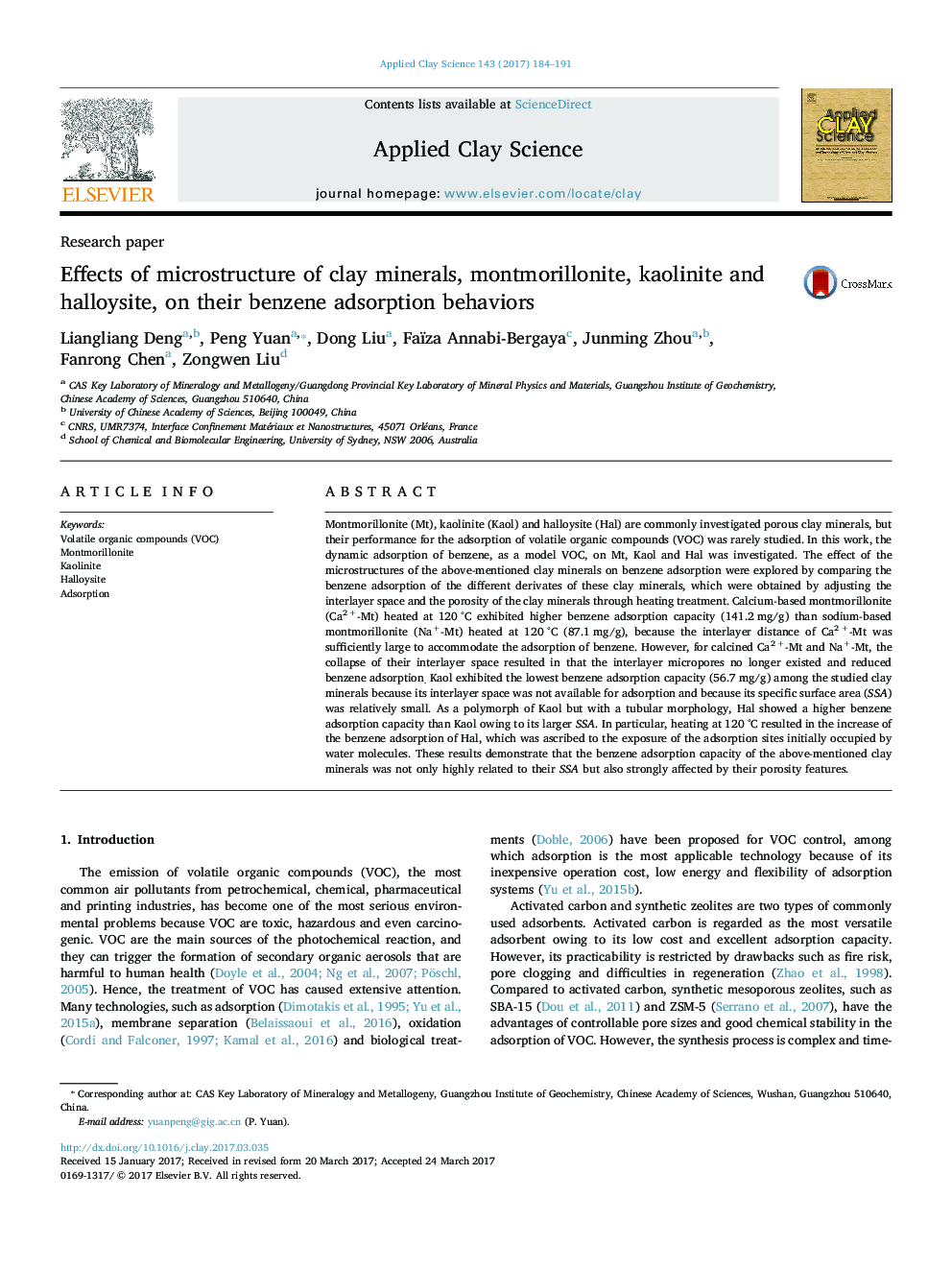| کد مقاله | کد نشریه | سال انتشار | مقاله انگلیسی | نسخه تمام متن |
|---|---|---|---|---|
| 5468912 | 1519045 | 2017 | 8 صفحه PDF | دانلود رایگان |
عنوان انگلیسی مقاله ISI
Effects of microstructure of clay minerals, montmorillonite, kaolinite and halloysite, on their benzene adsorption behaviors
ترجمه فارسی عنوان
تأثیر ریزساختار مواد معدنی رس، مونتموریلونیت، کائولینیت و هالویزیت بر رفتار جذب بنزن آنها
دانلود مقاله + سفارش ترجمه
دانلود مقاله ISI انگلیسی
رایگان برای ایرانیان
کلمات کلیدی
موضوعات مرتبط
مهندسی و علوم پایه
علوم زمین و سیارات
ژئوشیمی و پترولوژی
چکیده انگلیسی
Montmorillonite (Mt), kaolinite (Kaol) and halloysite (Hal) are commonly investigated porous clay minerals, but their performance for the adsorption of volatile organic compounds (VOC) was rarely studied. In this work, the dynamic adsorption of benzene, as a model VOC, on Mt, Kaol and Hal was investigated. The effect of the microstructures of the above-mentioned clay minerals on benzene adsorption were explored by comparing the benzene adsorption of the different derivates of these clay minerals, which were obtained by adjusting the interlayer space and the porosity of the clay minerals through heating treatment. Calcium-based montmorillonite (Ca2 +-Mt) heated at 120 °C exhibited higher benzene adsorption capacity (141.2 mg/g) than sodium-based montmorillonite (Na+-Mt) heated at 120 °C (87.1 mg/g), because the interlayer distance of Ca2 +-Mt was sufficiently large to accommodate the adsorption of benzene. However, for calcined Ca2 +-Mt and Na+-Mt, the collapse of their interlayer space resulted in that the interlayer micropores no longer existed and reduced benzene adsorption. Kaol exhibited the lowest benzene adsorption capacity (56.7 mg/g) among the studied clay minerals because its interlayer space was not available for adsorption and because its specific surface area (SSA) was relatively small. As a polymorph of Kaol but with a tubular morphology, Hal showed a higher benzene adsorption capacity than Kaol owing to its larger SSA. In particular, heating at 120 °C resulted in the increase of the benzene adsorption of Hal, which was ascribed to the exposure of the adsorption sites initially occupied by water molecules. These results demonstrate that the benzene adsorption capacity of the above-mentioned clay minerals was not only highly related to their SSA but also strongly affected by their porosity features.
ناشر
Database: Elsevier - ScienceDirect (ساینس دایرکت)
Journal: Applied Clay Science - Volume 143, July 2017, Pages 184-191
Journal: Applied Clay Science - Volume 143, July 2017, Pages 184-191
نویسندگان
Liangliang Deng, Peng Yuan, Dong Liu, Faïza Annabi-Bergaya, Junming Zhou, Fanrong Chen, Zongwen Liu,
